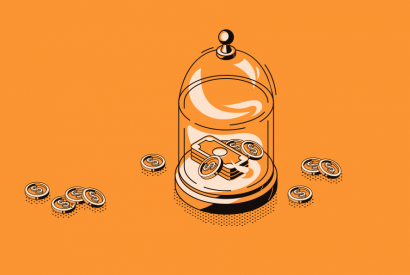What would a $1,000 investment made five years ago be worth today?

If you made a $1,000 investment today, how much will you have five years from now? Answering that question is complicated because there are many variables to consider (e.g., what you’re putting the money into, and whether or not inflation will accelerate).
There are multiples ways to put your money to work, and we can help guide you with some historical information. Let’s look at what several hypothetical $1,000 investment scenarios made in 2016 could be worth today. Note: we’re using historical returns of different instruments and assuming money made was reinvested, which had the additional benefit of compounding interest (i.e., your money earns a return, which earns a return on top of that!).
5 hypothetical investment scenarios:
1. Do Nothing With Your Money
Doing nothing within your money is still an investment decision. If you put $1,000 under your mattress in April 2016, today (March 2021), that amount would still be $1,000. However, the real value of your investment would be less when you adjust for inflation. Inflation is an increase in the price of goods and services, and reduces the purchasing power of a dollar over time. When adjusting for an average inflation rate of 1.85% per year over 5 years, the purchasing power of your $1,000 in 2016 would have declined to $912 in 2021¹.
2. Standard Checking Account
Placing $1,000 in a checking account in April 2016 would have earned you an average annual percentage yield (APY) of 0.12%, lifting that amount slightly to $1,006 by March 2021². When adjusting for an average inflation of 1.85% per year over 5 years, the purchasing power of that amount would have declined to $918. This means leaving your money idle in a standard checking account is as good as leaving your money under your mattress.
3. High-Yield Savings Account
A high-yield savings account is another common investment option for those seeking to increase their capital. Investing $1,000 in such an account in April 2016 would have earned you an average 1.21% APY, bringing your total up to $1,062 by March 2021³. When adjusting for an average inflation of 1.85% per year over 5 years, the purchasing power of that amount would have declined to $969.
4. Invest in the Stock Market
The stock market can be unpredictable, but making well-informed investments in the market may net you a higher yield than the alternatives mentioned above. There’s no telling what the right investment choice is, and it can be challenging to discern between a winning and losing investing prospect.
So how do you pick? There are options that allow you to invest in a basket of companies. An index fund is a popular option because it lets you put money in multiple companies that fall under the same market index (such as the S&P 500, which is the collection of the 500 largest United States companies by market capitalization). If you invested $1,000 in the S&P 500 Index in April 2016, you would have earned an average annual return of 16.10%, bringing your investment up to $2,110 as of March 2021. When adjusting for an average inflation of 1.85% per year over 5 years, the purchasing power of that amount would be $1,9254.
5. Balanced Portfolio Investments
A common balanced portfolio has an allocation that is around 60% stocks and 40% bonds. Placing $1,000 in a balanced portfolio in April 2016 would have earned you an average 10.87% return by March 2021, bringing your initial investment up to $1,6765. When adjusting for an average inflation of 1.85% per year over 5 years, the purchasing power of that amount would be $1,529.
What Else Should I Know?
Many people don’t invest because they consider it too risky. The good news is that investing allows you to choose the right level of risk for you so you can achieve your financial goals in the long term, even if you experience some losses along the way. Before making any investment, it’s important to assess your risk tolerance and risk capacity to ensure you are only taking on the right level of risk for you.
If you are ready to invest, make sure to research the pros and cons of each investing option. Consider the elements that could make your investment grow. Be smart, take control, and take the next step towards building long-lasting wealth!
Sources
- Bureau of Labor Statistics Consumer Price Index
- Value Penguin
- Value Penguin
- Yahoo Finance, NYSE:SPY from 1 April 2016 to 1 March 2021
- Yahoo Finance, NYSE:SPY and NYSE:AGG from 1 April 2016 to 1 March 2021








